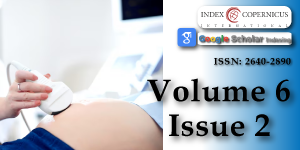Association between the victim’s menstrual cycle phase and genital injuries following sexual assault
Main Article Content
Abstract
Background: It is unknown what effect the menstrual cycle can have on the susceptibility to trauma following sexual assault.
Objectives: To compare the incidence of genital injuries following sexual assault in women with relationship to the three phases of the menstrual cycle
Methods: The design was a retrospective, cohort analysis set in a community-based nurse examiner program over a five-year study period. Sexual assault victims were between the ages of 13 - 40 years and agreed to a forensic examination. The menstrual cycle was divided into three phases: follicular, luteal and menses phase. The primary outcomes were the frequency and type of genital injuries documented in relation to the different phases of the menstrual cycle.
Results: Case files of 1376 cases of sexual assault were reviewed; 682 (49.6%) met the inclusion criteria. A total of 220 victims (32.3%) were in the follicular phase, 361 (52.9%) were in the luteal phase and 101 (14.8%) were in the menses phase. The three groups were comparable in terms of demographics, assault characteristics, and overall frequency of non-genital injuries. Assault victims in the follicular phase of the menstrual cycle had significantly more documented genital injuries (72.3%; 95% CI 66.4 - 78.2) compared to the luteal phase (64.0%; 95% CI 59.0 - 68.9) and the menses phase (58.4%; 95% CI 48.8 - 68.0).
Conclusion: Forensic examiners documented more genital injuries in the follicular phase of the menstrual cycle. Sex hormones may have confounding effects through influences on vaginal epithelial and mucosal integrity.
Article Details
Copyright (c) 2023 Vu A, et al.

This work is licensed under a Creative Commons Attribution 4.0 International License.
Sommers MS. Defining patterns of genital injury from sexual assault: a review. Trauma Violence Abuse. 2007 Jul;8(3):270-80. doi: 10.1177/1524838007303194. PMID: 17596344; PMCID: PMC3142744.
Brawner BM, Sommers MS, Moore K, Aka-James R, Zink T, Brown KM, Fargo JD. Exploring Genitoanal Injury and HIV Risk Among Women: Menstrual Phase, Hormonal Birth Control, and Injury Frequency and Prevalence. J Acquir Immune Defic Syndr. 2016 Feb 1;71(2):207-12. doi: 10.1097/QAI.0000000000000824. PMID: 26334741; PMCID: PMC4712081.
Rossman L, Solis S, Ouellette L, Kolacki C, Jones JS. Vulvovaginal Lacerations Following Consensual Versus Non-consensual Vaginal Penetration. Academic Emergency Medicine. 2021; 28 (S1):S391.
Legerlotz K, Nobis T. Insights in the Effect of Fluctuating Female Hormones on Injury Risk-Challenge and Chance. Front Physiol. 2022 Feb 17;13:827726. doi: 10.3389/fphys.2022.827726. PMID: 35250631; PMCID: PMC8891628.
Martin D, Timmins K, Cowie C, Alty J, Mehta R, Tang A, Varley I. Injury Incidence Across the Menstrual Cycle in International Footballers. Front Sports Act Living. 2021 Mar 1;3:616999. doi: 10.3389/fspor.2021.616999. Erratum in: Front Sports Act Living. 2021 Aug 18;3:745792. PMID: 33733235; PMCID: PMC7956981.
Chidi-Ogbolu N, Baar K. Effect of Estrogen on Musculoskeletal Performance and Injury Risk. Front Physiol. 2019 Jan 15;9:1834. doi: 10.3389/fphys.2018.01834. PMID: 30697162; PMCID: PMC6341375.
Wild CY, Steele JR, Munro BJ. Why do girls sustain more anterior cruciate ligament injuries than boys?: a review of the changes in estrogen and musculoskeletal structure and function during puberty. Sports Med. 2012 Sep 1;42(9):733-49. doi: 10.1007/BF03262292. PMID: 22784194.
Rossman L, Dunnuck C. A community sexual assault program based in an urban YWCA: the Grand Rapids experience. J Emerg Nurs. 1999 Oct;25(5):424-7. doi: 10.1016/s0099-1767(99)70104-2. PMID: 10508471.
Slaughter L, Brown CR, Crowley S, Peck R. Patterns of genital injury in female sexual assault victims. Am J Obstet Gynecol. 1997 Mar;176(3):609-16. doi: 10.1016/s0002-9378(97)70556-8. PMID: 9077615.
Delamater L, Santoro N. Management of the Perimenopause. Clin Obstet Gynecol. 2018 Sep;61(3):419-432. doi: 10.1097/GRF.0000000000000389. PMID: 29952797; PMCID: PMC6082400.
Draper CF, Duisters K, Weger B, Chakrabarti A, Harms AC, Brennan L, Hankemeier T, Goulet L, Konz T, Martin FP, Moco S, van der Greef J. Menstrual cycle rhythmicity: metabolic patterns in healthy women. Sci Rep. 2018 Oct 1;8(1):14568. doi: 10.1038/s41598-018-32647-0. Erratum in: Sci Rep. 2019 Apr 3;9(1):5797. PMID: 30275458; PMCID: PMC6167362.
Thiyagarajan DK, Basit H, Jeanmonod R. Physiology, Menstrual Cycle. 2022 Oct 24. In: StatPearls [Internet]. Treasure Island (FL): StatPearls Publishing; 2023 Jan–. PMID: 29763196.
Rossman L, Solis S, Stevens J, Wynn B, Jones JS. Effect of menstrual bleeding on the detection of anogenital injuries in sexual assault victims. Am J Emerg Med. 2019 Jun;37(6):1203-1204. doi: 10.1016/j.ajem.2018.11.005. Epub 2018 Nov 6. PMID: 30415984.
Jones JS, Rossman L, Diegel R, Van Order P, Wynn BN. Sexual assault in postmenopausal women: epidemiology and patterns of genital injury. Am J Emerg Med. 2009 Oct;27(8):922-9. doi: 10.1016/j.ajem.2008.07.010. PMID: 19857408.
Sommers MS, Zink TM, Fargo JD, Baker RB, Buschur C, Shambley-Ebron DZ, Fisher BS. Forensic sexual assault examination and genital injury: is skin color a source of health disparity? Am J Emerg Med. 2008 Oct;26(8):857-66. doi: 10.1016/j.ajem.2007.11.025. PMID: 18926341; PMCID: PMC2587067.
Kaushic C, Roth KL, Anipindi V, Xiu F. Increased prevalence of sexually transmitted viral infections in women: the role of female sex hormones in regulating susceptibility and immune responses. J Reprod Immunol. 2011 Mar;88(2):204-9. doi: 10.1016/j.jri.2010.12.004. Epub 2011 Feb 5. PMID: 21296427.
Brabin L. Interactions of the female hormonal environment, susceptibility to viral infections, and disease progression. AIDS Patient Care STDS. 2002 May;16(5):211-21. doi: 10.1089/10872910252972267. PMID: 12055029.
Sommers MS, Fisher BS, Karjane HM. Using colposcopy in the rape exam: health care, forensic, and criminal justice issues. J Forensic Nurs. 2005 Spring;1(1):28-34, 19. doi: 10.1111/j.1939-3938.2005.tb00008.x. PMID: 17073052.
Gray-Eurom K, Seaberg DC, Wears RL. The prosecution of sexual assault cases: correlation with forensic evidence. Ann Emerg Med. 2002 Jan;39(1):39-46. doi: 10.1067/mem.2002.118013. PMID: 11782729.
McGregor MJ, Du Mont J, Myhr TL. Sexual assault forensic medical examination: is evidence related to successful prosecution? Ann Emerg Med. 2002 Jun;39(6):639-47. doi: 10.1067/mem.2002.123694. PMID: 12023707.
Feldhaus KM, Houry D, Kaminsky R. Lifetime sexual assault prevalence rates and reporting practices in an emergency department population. Ann Emerg Med. 2000 Jul;36(1):23-7. doi: 10.1067/mem.2000.107660. PMID: 10874231.

